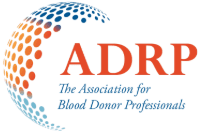A robust autonomous method for blood demand forecasting
Authors
Esa V. Turkulainen, Merel L. Wemelsfelder, Mart P. Janssen, Mikko Arvas
Abstract
Background
Blood supply chain management requires estimates about the demand of blood products. The more accurate these estimates are, the less wastage and fewer shortages occur. While the current literature demonstrates tangible benefits from statistical forecasting approaches, it highlights issues that discourage their use in blood supply chain optimization: there is no single approach that works everywhere, and there are no guarantees that any favorable method performance continues into the future.
Study Design and Methods
We design a novel autonomous forecasting system to solve the aforementioned issues. We show how possible changes in blood demand could affect prediction performance using partly synthetic demand data. We use these data then to investigate the performances of different method selection heuristics. Finally, the performances of the heuristics and single method approaches were compared using historical demand data from Finland and the Netherlands. The development code is publicly accessible.
Results
We find that a shift in the demand signal behavior from stochastic to seasonal would affect the relative performances of the methods. Our autonomous system outperforms all examined individual methods when forecasting the synthetic demand series, exhibiting meaningful robustness. When forecasting with real data, the most accurate methods in Finland and in the Netherlands are the autonomous system and the method average, respectively.
Discussion
Optimal use of method selection heuristics, as with our autonomous system, may overcome the need to constantly supervise forecasts in anticipation of changes in demand while being sufficiently accurate in the absence of such changes.
March 14, 2022
Related Resources
Engaging blood donors as advocates Social media preferences and associations with marketing
Background: Various critical medical procedures would become impossible without blood donations—saving lives in emergencies, surgeries, and chronic conditions like thalassemia. Therefore, it seems crucial to enhance donor recruitment and ensure…
Rethinking the role of older donors in a sustainable blood supply
INTRODUCTION Many countries, particularly high human development index countries, are facing the challenge of an aging population.1 For Blood Collection Agencies (BCAs) in these countries, an aging population poses two…


